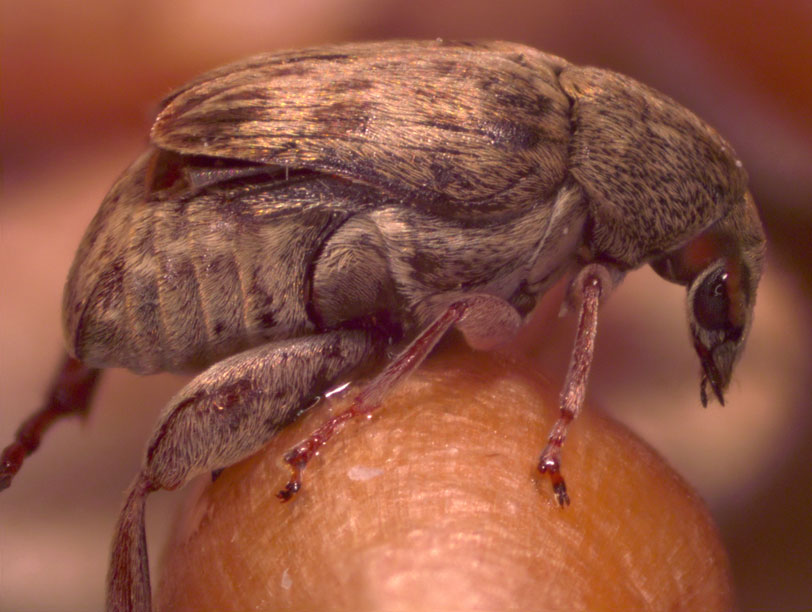Bean weevil
Acanthoscelides obtectus (Say)
Classification
Primary pest; Grain feeder
Order: Coleoptera
Family: Chrysomelidae
Acronym: AOB
Description
- Adults are 3 to 4 mm long, globular in shape with long legs.
- Elytra do not reach the end of the abdomen, leaving the last terga exposed.
- Last upper abdominal segment is covered with yellowish hair (setae).
- Inner ridge of the ventral margin of the hind femur has three or four "teeth".
- Larvae are white and grub-like, having reduced legs.
Images
Similar species
- Pea weevil (Bruchus pisorum)
Commodities affected
- Beans, broad beans, lentils, chickpea, soybean
Signs of infestation
- Damaged seeds with entrance or exit holes
Damage
- Damage is distinctive with tiny dot-like entrance holes and larger, round exit holes and excavated seed.
- Large populations may reduce stored seed to dust.
How to control
Geographic range
- Is distributed worldwide
- Is distributed across Canada
Where found
- Primarily attacks stored beans but may attack plants in the field
- Establishes well in heated storages and granaries
Life history
- Adult bean weevils feed on bean plant foliage and seed pods.
- Females lay eggs inside the seed in storage or lays multiple eggs on the surface of a pod in the field.
- Larvae develop in growing or stored bean seeds.
- After pupation within the seed, the adult chews an exit hole through the seed coat.
- In heated storage conditions, the adult bean weevil can emerge at any time of the year and breed continuously.
Not what you're looking for?
Start over again from the insect identification keys page.
"Page details"
- Date modified:





